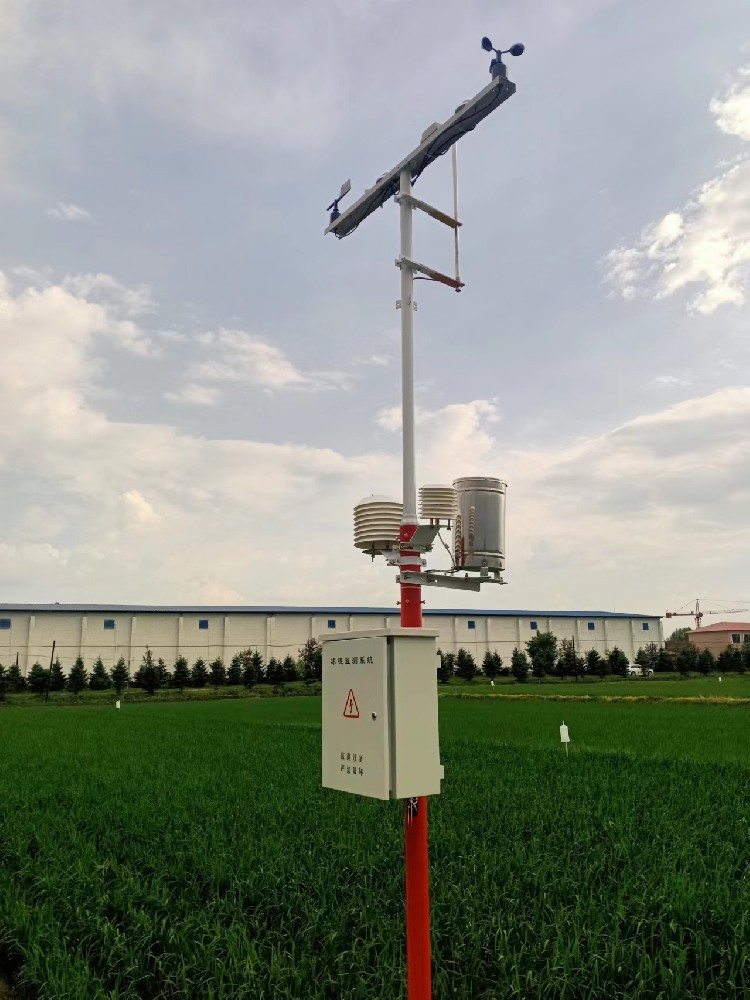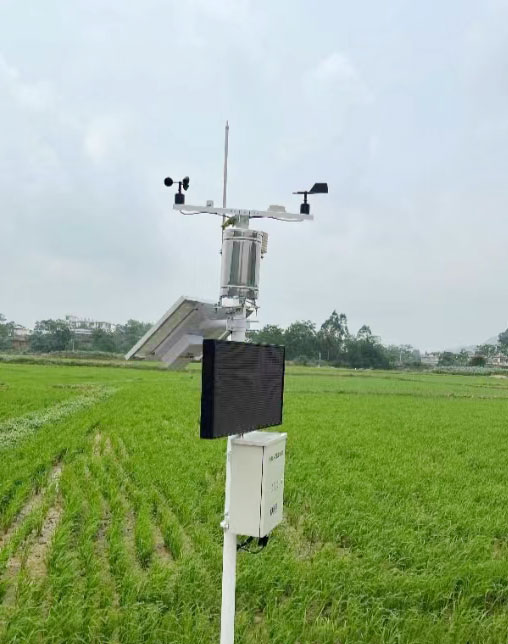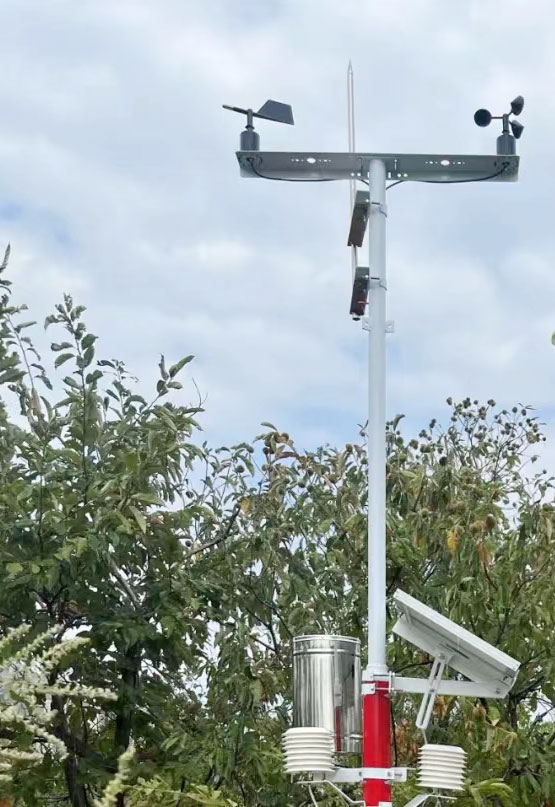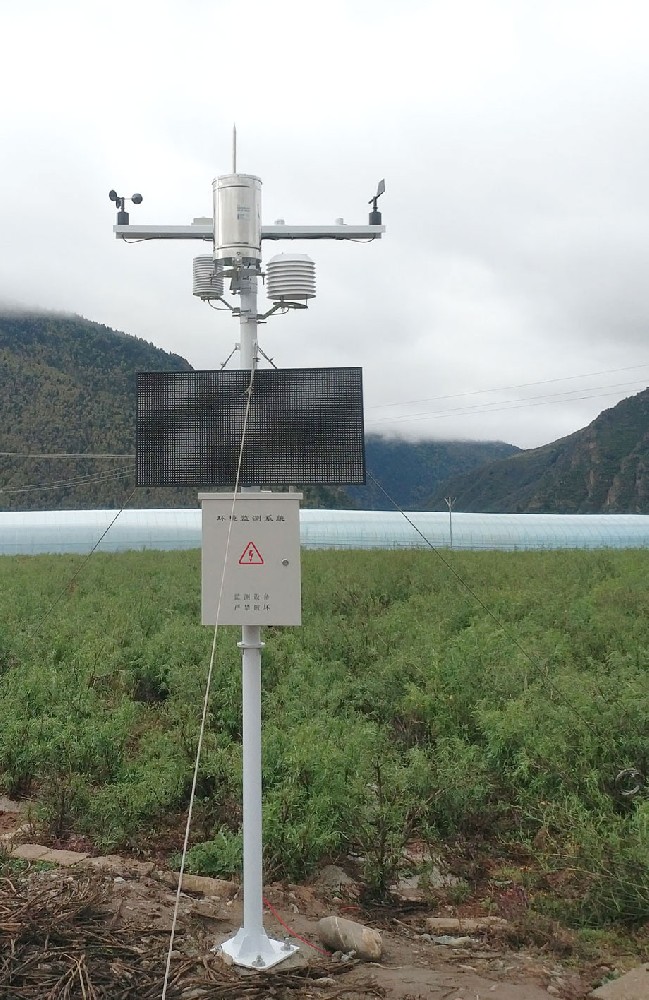

— Blogs —
—Products—
 Consumer hotline +8618073152920
Consumer hotline +8618073152920 WhatsApp:+8615367865107
Address:Room 102, District D, Houhu Industrial Park, Yuelu District, Changsha City, Hunan Province, China
Product knowledge
Time:2024-11-20 14:29:34 Popularity:271
A Farm Weather Station is a specialized device designed to monitor and predict climate changes, providing meteorological services for agricultural production. These weather stations collect a range of key climate data to help farmers better understand the current weather conditions and optimize agricultural production and management decisions. Below is a detailed introduction to the main features, components, and application value of farm weather stations.
- Real-time monitoring of various meteorological parameters, including but not limited to temperature, humidity, wind speed, wind direction, rainfall, light intensity, soil temperature and moisture, etc.
- Utilizes IoT technology to enable remote data transmission and device management, allowing real-time viewing and analysis.
- The system automatically triggers an alarm when environmental parameters exceed preset thresholds, helping farmers respond quickly.
- Provides historical data storage and analysis to help formulate irrigation plans, pest and disease control strategies, etc.
- Optimizes agricultural operations based on long-term data, such as adjusting planting times and fertilizer usage to adapt to climate changes.
- Monitors extreme weather events like droughts and floods, providing early warnings to minimize losses.
- Utilizes advanced sensor technology and data processing algorithms to ensure accurate data.
- Capable of monitoring a wide range of meteorological elements, such as temperature, humidity, rainfall, wind speed, wind direction, light intensity, etc.
- Supports automatic data collection, storage, and transmission, with some advanced models offering data analysis and early warning features.
- Can be customized with different sensors to meet specific agricultural needs.
- Easy to install, with a user-friendly interface that is simple to understand and use.
- Includes temperature sensors, humidity sensors, rainfall sensors, wind speed and direction sensors, light intensity sensors, etc., to collect various meteorological data.
- Responsible for collecting data from the sensors and converting it into digital signals.
- Used to transmit data to cloud servers or users' terminal devices, supporting both wired and wireless (such as GPRS, 4G, 5G, Wi-Fi, LoRa, etc.) transmission methods.
- Optional solar panels and batteries to provide off-grid power, making it suitable for remote farms.
- Provides data visualization, historical data analysis, alert notifications, etc., to help users better manage and analyze meteorological data.

- By monitoring and predicting weather conditions in real-time, farm weather stations help farmers develop more scientific planting plans, improving crop yield and quality.
- Early warnings of extreme weather events (such as frost, floods, droughts) help reduce agricultural losses.
- Helps manage irrigation and fertilization more efficiently, saving water and fertilizers and reducing production costs.
- Monitors environmental changes, providing data support for sustainable agricultural development.
- Provides valuable on-the-ground data for agricultural scientific research, fostering the advancement of agricultural technology.
The World Meteorological Organization classifies agricultural weather stations into four categories:
- Undertake comprehensive observation tasks, including meteorological and agricultural biological observations, providing detailed data support for agricultural meteorology research and services.
- These stations are simpler than main agricultural weather stations, with a more basic setup but still provide essential agricultural meteorological data.
- Mainly supplement the main and general agricultural weather stations’ observations, focusing on specific areas or crops for more targeted observations.
- Focus on specific agricultural meteorological issues or crops, providing in-depth and specialized research data, often set up in special environments or conditions.

- By monitoring real-time soil moisture and atmospheric conditions such as temperature and humidity, farm weather stations help farmers determine the optimal irrigation time and quantity, preventing water waste and ensuring crops receive sufficient moisture.
- Adjust irrigation plans based on meteorological data, ensuring crops are supplied with water when needed, thereby improving water use efficiency.
- Weather stations can predict the environmental conditions favorable for pest outbreaks, such as specific temperature and humidity combinations, allowing farmers to take preventive measures in advance.
- By monitoring weather conditions, farmers can understand the climate suitable for pest activity and use unfavorable weather conditions for natural pest control or apply pesticides at the right time.

When selecting a farm weather station, you need to consider the following key factors:
- Small farms: May only need basic weather data such as temperature, humidity, and rainfall.
- Large farms or farms growing specific crops: May require more comprehensive monitoring, including soil moisture, wind speed, wind direction, solar radiation, etc.
- The location and climate of the farm affect the meteorological elements that need to be monitored. For example, coastal areas may focus more on wind speed and direction, while inland areas may prioritize temperature and rainfall.
- Determine your budget range to filter out products that meet your economic capacity.
- Data Transmission: Consider whether you need remote data transmission features, such as wireless transmission or mobile network support.
- User Interface and Data Analysis Software: Check if the weather station has an easy-to-use interface and powerful data analysis tools.
- Choose products with low maintenance costs and high reliability. Given that farm environments may be harsh, the equipment needs to be durable.
- Ensure that the sensors can accurately measure the necessary meteorological parameters. Check sensor calibration, accuracy, and stability.
- Consider whether the weather station can easily access power or if solar-powered options are needed.
- Choose reputable brands with reliable after-sales service and technical support.

- Research and compare different weather station products available in the market, focusing on their performance, price, and user reviews.
- Seek advice from agricultural meteorology experts or experienced farmers.
- If possible, conduct on-site testing or view a demonstration to evaluate the actual performance of the device.
- Think about whether you may need to add more sensors or features in the future.
For instance, the Noibol Agricultural Weather Station can monitor wind direction, wind speed, atmospheric temperature, humidity, air pressure, rainfall, light intensity, solar radiation, and other meteorological elements. It supports solar power and 4G data transmission, making it ideal for agricultural planting and meteorological monitoring.

Farm weather stations are indispensable in modern agriculture. They not only enhance the efficiency and sustainability of agricultural production but also provide farmers with powerful decision-making tools. With technological advancements, future farm weather stations will become even smarter and more efficient, better serving global agricultural production. When choosing the right weather station, it is important to consider your specific needs, budget, and the quality of the vendor’s service. Hopefully, the above information will help you better understand and choose the right weather station for your farm.
Prev:Best weather station
Next:Pyrheliometer Price
Related recommendations
Sensors & Weather Stations Catalog
Agriculture Sensors and Weather Stations Catalog-NiuBoL.pdf
Weather Stations Catalog-NiuBoL.pdf
Related products
 Combined air temperature and relative humidity sensor
Combined air temperature and relative humidity sensor Soil Moisture Temperature sensor for irrigation
Soil Moisture Temperature sensor for irrigation Soil pH sensor RS485 soil Testing instrument soil ph meter for agriculture
Soil pH sensor RS485 soil Testing instrument soil ph meter for agriculture Wind Speed sensor Output Modbus/RS485/Analog/0-5V/4-20mA
Wind Speed sensor Output Modbus/RS485/Analog/0-5V/4-20mA Tipping bucket rain gauge for weather monitoring auto rainfall sensor RS485/Outdoor/stainless steel
Tipping bucket rain gauge for weather monitoring auto rainfall sensor RS485/Outdoor/stainless steel Pyranometer Solar Radiation Sensor 4-20mA/RS485
Pyranometer Solar Radiation Sensor 4-20mA/RS485
Screenshot, WhatsApp to identify the QR code
WhatsApp number:+8615367865107
(Click on WhatsApp to copy and add friends)